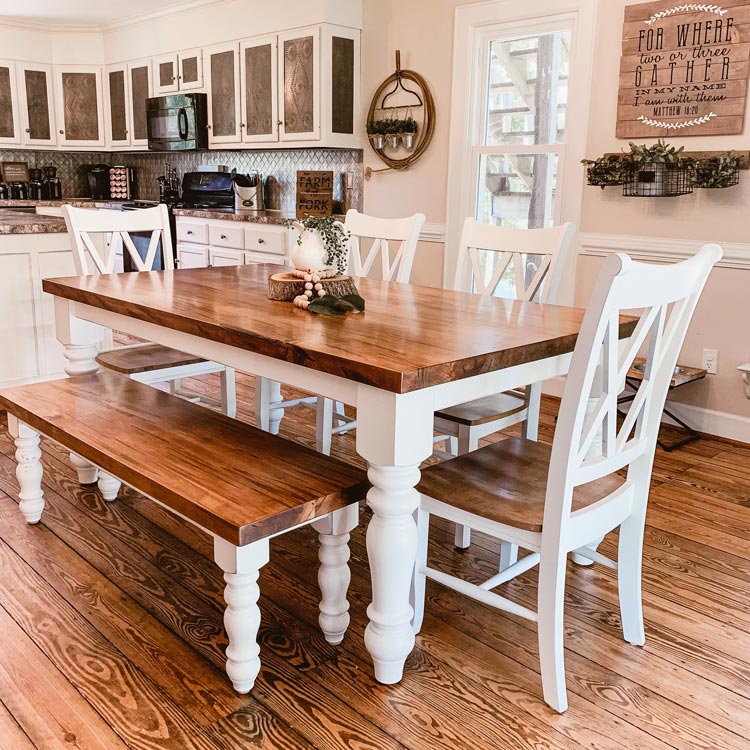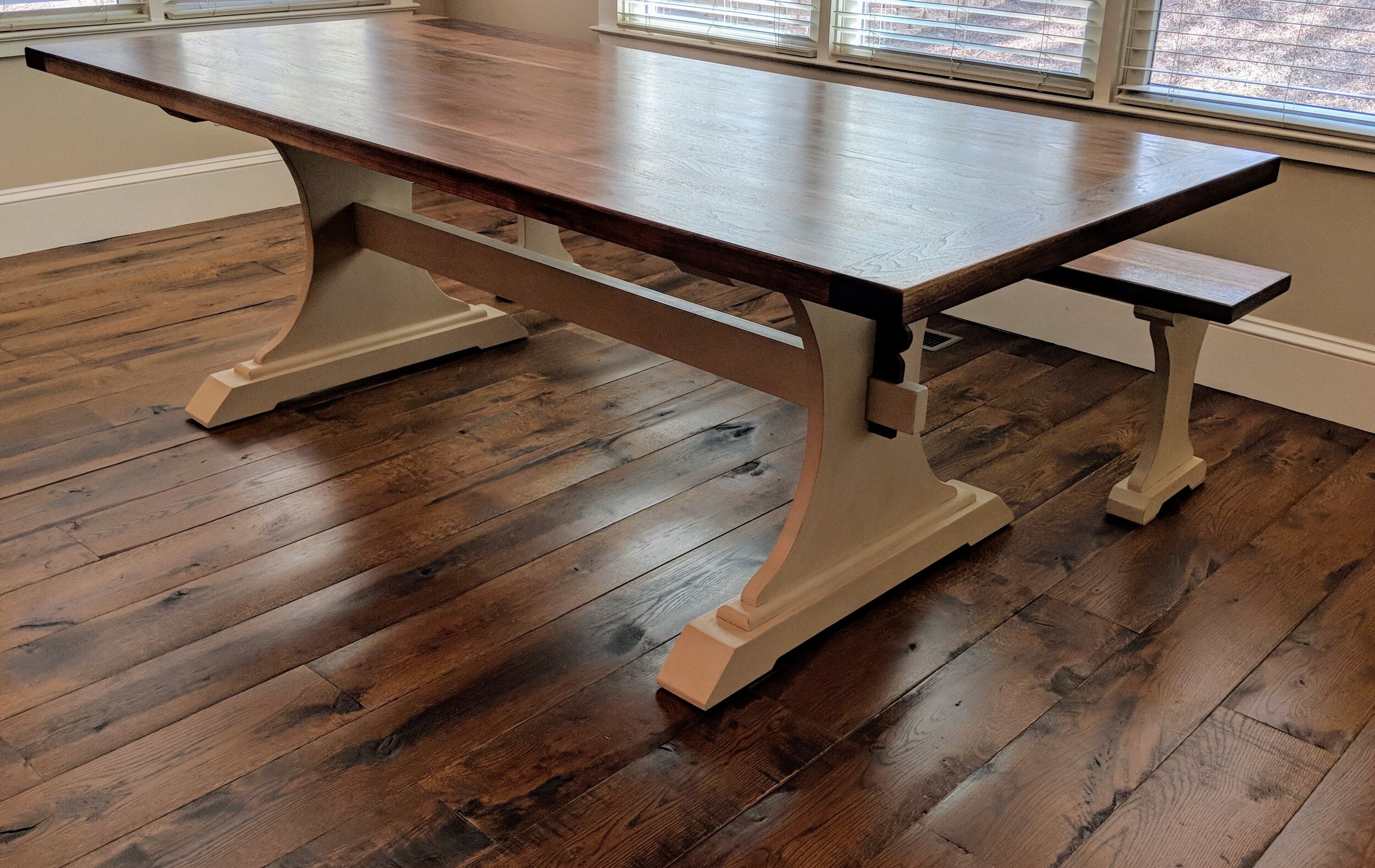How Dining Room Table Legs Can Change the Entire Aesthetic of Your Room
How Dining Room Table Legs Can Change the Entire Aesthetic of Your Room
Blog Article
From Typical to Modern: Find the Perfect Dining Room Table Legs for Your Design
While classic layouts such as cabriole and transformed legs stimulate a feeling of timeless elegance, modern styles like hairpin and geometric alternatives present an opportunity for striking visual passion. As you think about these components, the inquiry stays: how can you effortlessly incorporate these diverse leg designs to create an unified eating experience?
Comprehending Table Leg Styles
The range of eating space table leg styles can considerably influence both the aesthetic appeals and functionality of the room. Each leg design contributes distinct visual components and functional features, dealing with varied design choices and usage needs. Understanding these styles is critical for choosing the best table that aligns with your overall interior design vision.
As an example, tapered legs supply a clean, traditional look that can improve a space's style, while stand bases provide security and optimize legroom, making them suitable for smaller areas. Barrette legs, a hallmark of mid-century modern-day layout, present a commercial flair, permitting an airy, open feeling. In a similar way, trestle legs stimulate rustic charm, giving robust support and a feeling of eternity.
Moreover, the choice of products plays a substantial duty. Wood legs can bring heat and structure, whereas metal choices often convey a sleek, modern ambiance. Eventually, recognizing table leg styles is vital for creating a cohesive dining location that shows individual style while making sure usefulness and comfort. By attentively thinking about these aspects, you can boost both the visual and useful charm of your eating area.
Traditional Table Leg Options
When choosing dining-room table legs, typical alternatives often personify ageless elegance and workmanship. These designs reflect an abundant heritage and a dedication to top quality, making them perfect for those that appreciate classic aesthetic appeals.
Among one of the most legendary conventional leg styles is the cabriole leg, identified by its elegant rounded form. This style typically features ornamental carvings and is most generally found in Queen Anne and Chippendale furniture. Another popular choice is the turned leg, which boasts a series of smooth, rounded shapes that provide a traditional appearance while preserving stability.
Additionally, the straight leg, while simple, uses a durable and unadorned framework that can blend effortlessly with a selection of tabletop styles. For those drawn to ornate outlining, claw-and-ball feet legs stimulate a feeling of grandeur and can function as a spectacular prime focus in any dining room.
Last but not least, pedestal bases, although not strictly legs, give a different standard alternative that permits sufficient legroom and can be magnificently sculpted. Each of these conventional leg styles adds to the total setting of a dining space, weding feature with aesthetic charm.

Modern Table Leg Layouts
Modern table leg layouts provide a diverse variety of designs that emphasize tidy lines and innovative materials. These designs commonly focus on capability while functioning as striking centerpieces within a dining room. Minimalist aesthetics prevail, with legs crafted best site from products such as metal, glass, and crafted timber, which add to a ventilated and contemporary feeling.
One prominent layout is the barrette leg, characterized by its slim, conical structure that gives stability without frustrating the table top (dining room table legs). This style is usually located in mid-century modern furnishings and can effortlessly enhance different table shapes. Another pattern is using geometric forms, where legs may handle unbalanced or angular kinds, adding visual passion and a touch of artistry

Blending Styles for Special Rooms
Often, property owners look for to produce distinct eating spaces that show their individual style by mixing numerous style elements. This method enables for the unification of diverse aesthetics, leading to an unified yet distinct environment. For example, coupling a rustic wood table with smooth, modern metal legs can create a distinctive contrast that raises the space's general charm.
Furthermore, integrating vintage table legs with modern tabletops can evoke a sense of history while maintaining a modern-day sensibility. Such mixes not just showcase private preference yet see page also motivate creative thinking, allowing home owners to curate an area that feels both personal and welcoming.
Color plays an essential function in this mixing procedure; choosing table legs that match or comparison with the existing color design can enhance aesthetic interest. As an example, whitewashed legs can soften the daring of a dark table surface, developing a well balanced aesthetic.
Tips for Choosing the Right Legs
Choosing the right table legs is crucial for attaining both performance and aesthetic charm in your eating space. Begin by considering the general design of your area. Standard settings gain from legs that feature complex carvings or transformed designs, while modern rooms may call for sleek, minimalist styles.
Following, examine the height and security of the legs. dining room table legs. Standard dining tables range between 28 to 30 inches in height, so ensure the legs enhance this dimension for comfort. Additionally, robust materials, such as wood or metal, can enhance stability and durability
Evaluate the leg form as well-- alternatives include straight, tapered, or stand layouts. Straight legs use a timeless look, while conical legs can add a touch of style. Pedestal bases give adequate legroom and are excellent for smaller sized areas.
Final Thought
In recap, choosing the suitable eating room table legs needs mindful consideration of both modern and conventional designs. By integrating leg style, height, and product with the overall decor, a cohesive and welcoming ambience can be attained.
The variety of dining space table leg designs can substantially influence both the aesthetics navigate to this site and capability of the space. Eventually, comprehending table leg designs is necessary for producing a natural eating area that shows personal design while ensuring functionality and convenience.One of the most legendary standard leg designs is the cabriole leg, identified by its graceful rounded shape. Straight legs offer a traditional look, while conical legs can add a touch of elegance.In summary, picking the suitable eating area table legs requires careful factor to consider of both traditional and modern styles.
Report this page